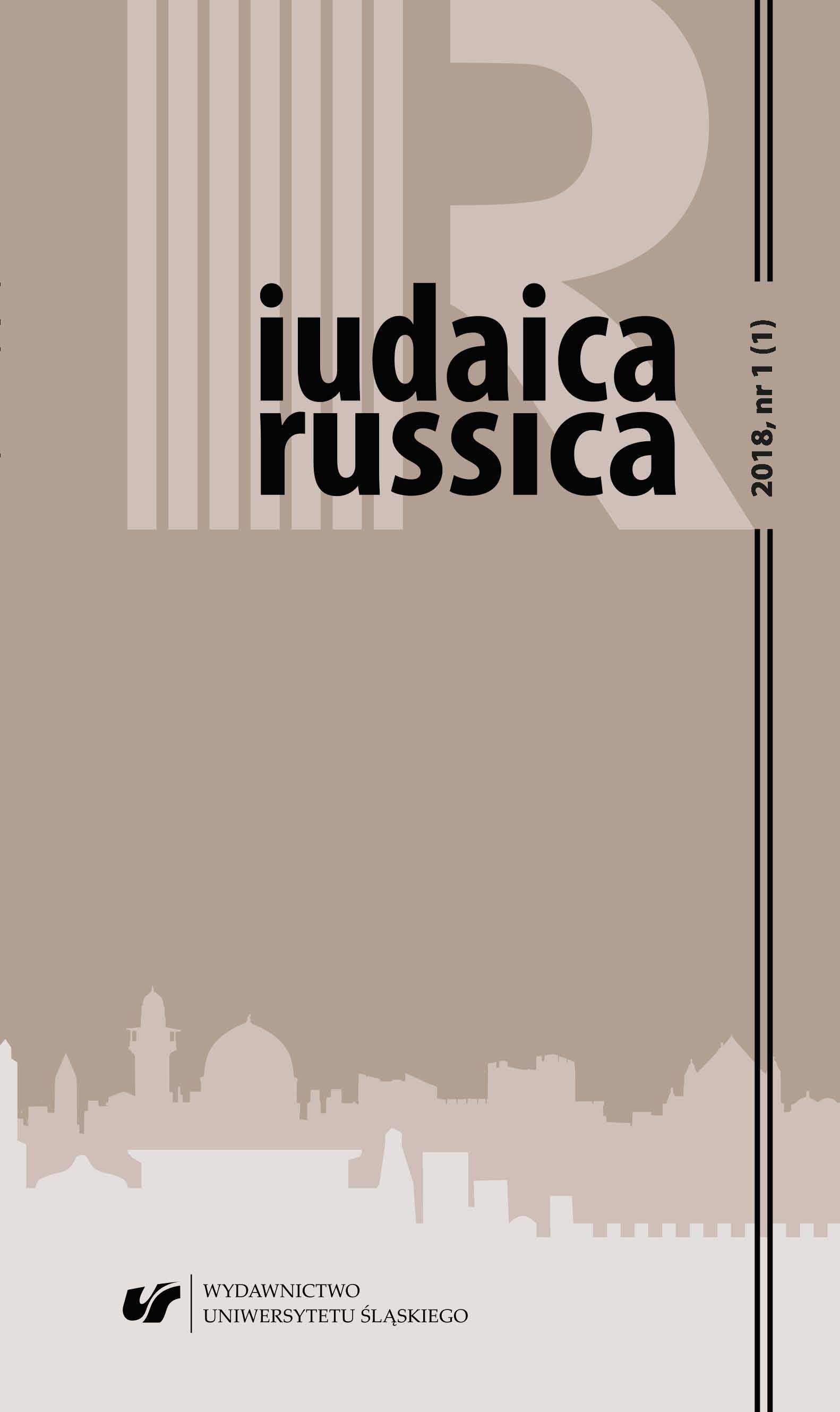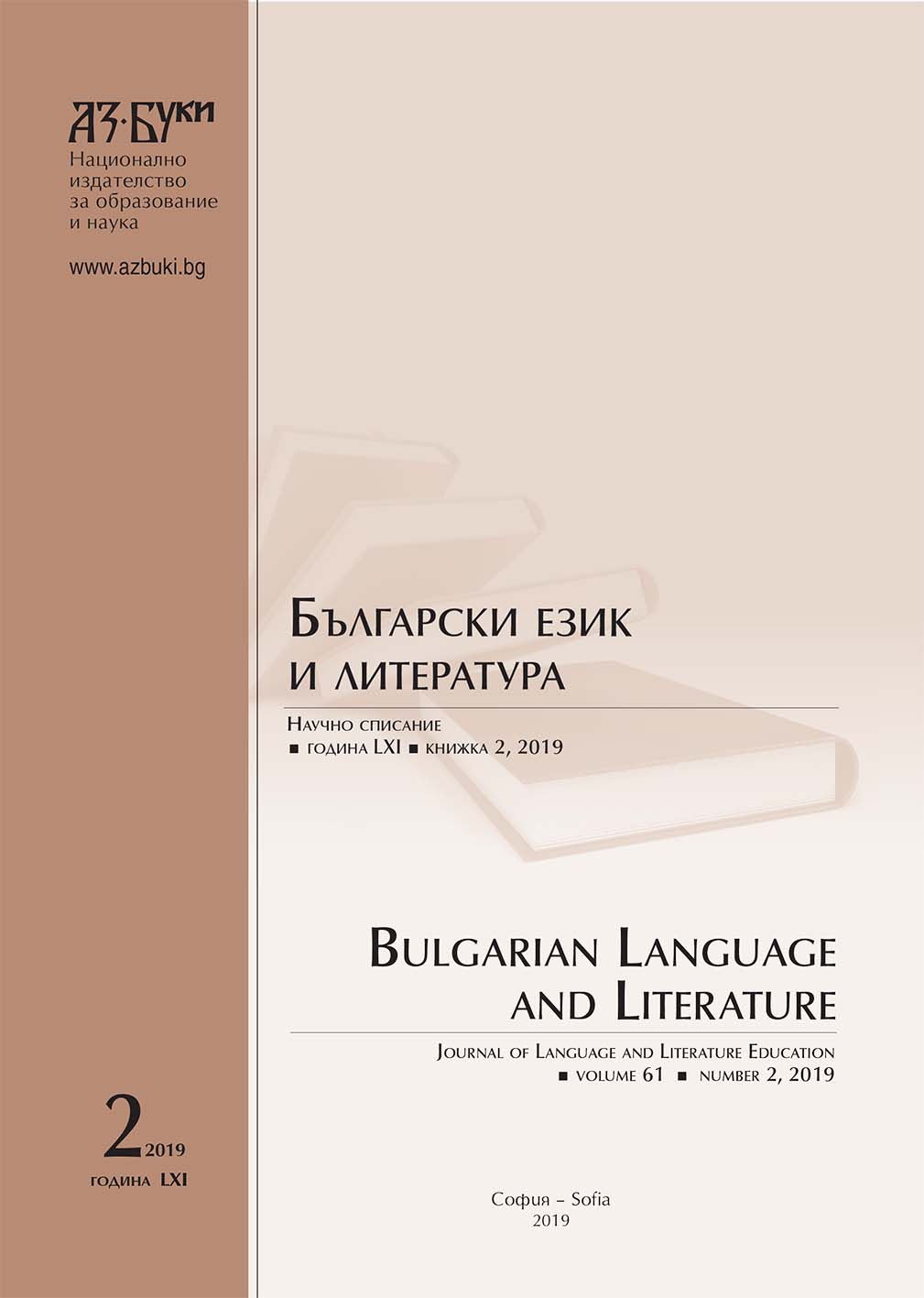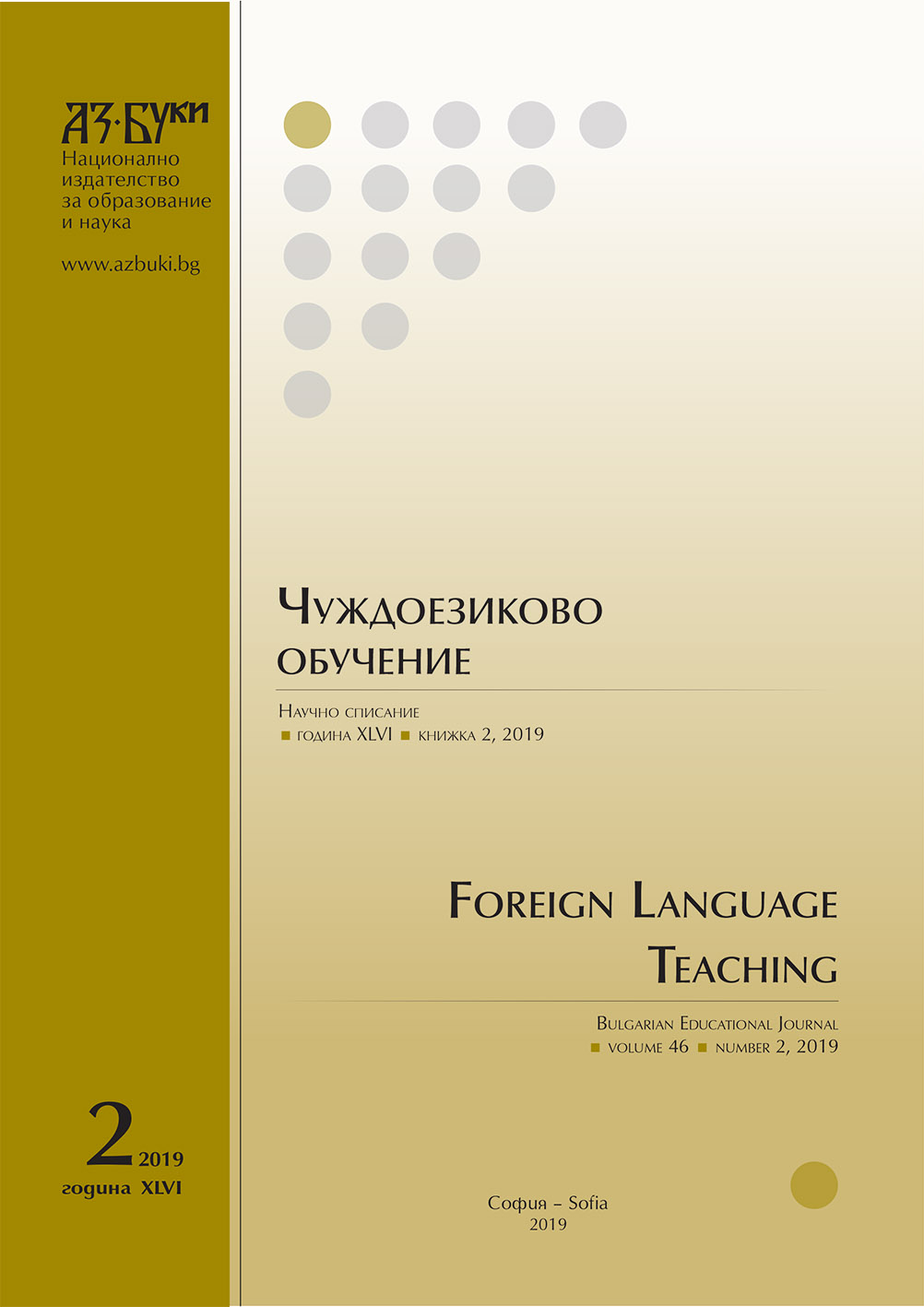
We kindly inform you that, as long as the subject affiliation of our 300.000+ articles is in progress, you might get unsufficient or no results on your third level or second level search. In this case, please broaden your search criteria.


The analysis of the prayer contained in the Hebrew-Russian prayer book allows to describe the linguistic image of God and his people — Israel/Jews. Appealing to the patriarchs, to the covenant between God and Israel, to the Torah, Jerusalem and temple worship, that is, the centuries-long Jewish religious tradition, are cultural codes, and at the same time key components of Jewish identity. They are a point of reference in considering so called the Jewish question, taking into account primarily the Jewish perspective, not the Christian one.
More...
The text briefly presents the third edition of the Forum “Research Methods in Bulgarian Language and Education”, organised by the Institute for Bulgarian Language “Prof. Lyubomir Andreychin” in 2018. The Forum is a part of the activities conducted under the project of the Institute for Bulgarian Language “The Written Word Remains. Write Correctly!”.
More...
The article presents the current development of the Bulgarian language and reveils some negative phenomena in its use. There is a comprehensive program to curb these phenomena, which includes the activity of linguists, teachers, the public and media. The role of institutions such as the Institute for Bulgarian Language and the Ministry of Education and Science in the process of enhancing the linguistic culture and language competence of all Bulgarians is emphasized.
More...
The confrontation of common sense and the complex deductive schemes of scientific knowledge often plays a retaining role, and creates in linguistics some methodological obstacles for understanding the essence of linguistic substance and its form. On the other hand, such confrontation stimulates all a priori created abstract models of the overall architectonics of the linguistic levels and provides conditions for the emergence of new ideas and methods in linguistics, thus paradoxically becoming a guarantor of the progressive movement towards constant refinement of the research methods
More...
A methodology based on solid theoretical grounds has been applied in analyzing the rôle of terminology in the teaching. The article deals with: 1) meaning and content (matter) of the term; 2) conceptual and lexicosemantical relation in terminology. Special attention is paid to terminological synonyms.
More...
The article includes aspects of the configurational syntactic analysis, which gives promising perspective for the school practice compared to the traditional approach. The idea for applying elements from the formal grammar while learning specific thematic units from the material for the 7th grade has been argued with new analytical practices. It turns out that students manage to understand the grammatical formalisms. Furthermore, the decoding of the formal notes and the work on the structurographical sentence outline, automatically discloses the function of the sentence elements without questions. The Structurography provides reliable techniques to make a fingerprint of the personal linguistic profile. If the teacher has this idea when helping students with the evolution of their language skills, the teacher would be able to measure in any moment the range and depth of the simple clause and complex sentence. This is actually a work for developing the individual language potential, which – for those who study syntax in 21st century, acquires visible priority compared to the absolutely hackneyed school practice.
More...
The study presents the answers to three questions from a nationally representative sociological survey on the language attitudes of Bulgarians conducted in 2017. Respondents’ answers contain information on school and teachers role regarding literacy. Analysis of the data indicates that teachers are important factor in formation of language attitudes pride and awareness of the norm
More...




Tackling lexical difficulties (i.e. confusable words) in learning and teaching Norwegian as a foreign language at university level and the typologization of those difficulties requires an integrated approach which takes into account the intra-system lexical relations and asymmetries, as well as the negative language transfer from genetically closely related languages. One of the major sources of lexical difficulties is paronymy, as manifested in students’ interlanguage. The paper outlines three major groups of paronymic lexical items, including word-formation variants, and illustrates the proposed integrated approach to confusable words by relevant case-in-point examples.
More...
The cognitive approach explains the non-comma at predictive boundary in an identical relation, where there is a comma in other cases. The Union is derived from its status as a comma-tag and syntax link syntax and relation syntax.The cognitive approach explains punctuation as a function of the predicate rather than as a graph of one or another union use. The thesis is confirmed by the multifunctionality of allied uses.Formal signs and functionality as an end in itself are not an objective and true basis for the explanation of punctuation and the exceptions therein. Its syntactic principle obliges the syntactic attitude to be brought to the fore, which is not only represented by the position, nor by the explanation of the relationship when there is one and expressed in union.
More...
The article analyses lesson-planning as a key element of pedagogical theory and practice. It argues that usage of digital media environment which largely shapes the twenty-first century reality could bring about a boost in learning achievements as digital technologies and tools offer additional opportunities for obtaining knowledge, skills and positive attitudes. Moreover, as the shown examples demonstrate digital means being part of learners’ daily experience provide a platform for a tailor-made teaching which answers better their needs and interests.
More...
Modern philological education is expected to respond to the public expectations for practical orientation and applicability of the knowledge acquired at university. Teachers search forinteractive forms of learning, among which case-based teaching stands out as a form of learning by doing, within which theoreticalknowledge is applied to solve concrete problems. Alongsidetheir critical analysis skills and techniques for reaching adequate solutions to problems, students practice and develop their language skills and knowledge.
More...
This article focuses on poetry as a phenomenon of futuristic art. “Zaum” is not an invention of futurists. It exists as an adequate means of transmitting ecstatic states to the shamans, its spirites, its esoteric and religious function has been known since antiquity. For Kruchonich, as well as for a number of other poets and playwrights, such as I. Zdenevich, the opportunity is to avoid the wrong verbal meanings, the speech patterns, and speech parsing. It is a path to the emotionally-sensual sphere and sub consciousness of man. Since, in the art of futurists, it is important not to copy reality, but to validate one’s own being and creative activity. An instrument of such activity is deformation, overturning, breaking the form. Hence,mistakes are deliberately legalized and even canonized because the error creates a distracting effect and makes us see in the act of deformation the return to the poetic. Poetic poetry, of course, does not end its development in a natural way. It is forbidden, as is the incomprehensible art. In 1931, the OGPU brought an action against the Obiratels and A. Tuffanov for the sake of accusation, accusing them of subversive plans against Soviet power. Moody poetry resurrected in the 1950s, when poets such as Vladimir Kazakov, Henry Sapgir, Igor Choline, Sergey Siege, Rie Nikonowa gradually entered the literature. The return to the pre-cultural state to which the futuristic mind calls the simultaneous renewal of the world and art, the rediscovery of the lost unity between man and space.
More...
One of the literary discourse features is the embodiment of thoughts in the form of images. The image structures artistic literary space. Artistic figurativeness simulates a particular reality, which has co-referent nature and it has visualization of worldview as the basis of intention. Processes of creating and understanding literary text are identical. Stages of the processes include figurative categorization, unpacking and reading of images. Imagery means, included in a text, form a figurative paradigm which is headed by the base image. The coherence of figurative means is the structuring principle of the literary text. On the one hand, the base image variation is limited by the cognitive matrix corresponding to one or another mental code; on the other hand, it is unlimited and unpredictable and depends on the text author’s creative potential. The base image organizes the cognitive activity of the author and the reader. It becomes the basis for artistic communication, ensuring its effectiveness. The base image determines the adequacy of the text understanding. Due to the base image, addressee covers the entire paradigm of figurative means and, to some extent, correctly interprets it. Violation of this pattern leads to destruction of the text imagery integrity, to interference in artistic communication. The base image embodies one of the fundamental principles of hermeneutics: the requirement of a holistic interpretation, subordination of all text elements to a single text-forming foundation.
More...
The article makes an overview of the relevant aspects of teaching foreign languages for specific purposes at the University of National and World Economy (UNWE) in Sofia (Bulgaria), which is the economics and business school with the longest history in South-eastern Europe. It examines the different periods of foreign language teaching (FLT) at this hub of academic excellence, as special attention is paid to the different language sectors. Various scholarly studies, papers and articles have been given due analytical consideration. The research and academic achievements in teaching foreign languages for specific purposes at UNWE are seen as an integral part of the linguo-didactic archeology. In this respect various aspects of academic instruction in foreign languages have been explored against the background of the centenarian anniversary of the prestigious university that has been crowned with significant successes in the field of the national and world economy.
More...
A. Bukovski’s practical German easy learning guide closely follows Franz Ahn’s Method but it lags considerably behind in its adaptation for immediate application in German language teaching when compared to the French textbooks designed by Kostaki Tarnovski and Sava Radulov. That aside, one cannot deny the fact that Bukovski’s textbook, along with Kostaki Tarnovski’s and Sava Radulov’s textbooks, became a harbinger of the new European spiritual wave and a sign of the effective breakthrough in Bulgarian education at the turn of the 20th century.
More...